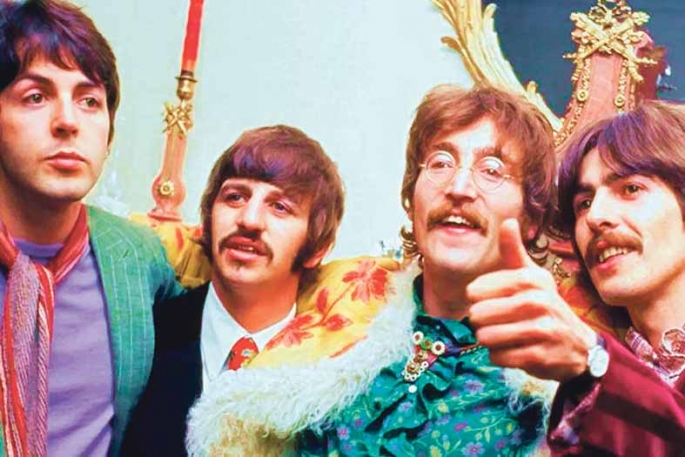All of us have wished, sometime, for a time machine.
It would come in handy for many a situation: the brief instant you realise you have just fallen out of a tree; the moment after you fail that breathalyser test; I'm sure you can all think of something…
But I was musing in line with that old dinner party game: ‘If you could go back anywhere in time, where/when would you go?'
Recently Peter Jackson helped out, taking us back to the Beatles' sessions for ‘Let It Be', allowing us to be flies on the wall as music long part of the soundtrack of our lives was created in front of our eyes.
It was immersive. It was amazing. It went on for bloody ages.
Yes, albeit fascinating for devotees, for the more casual music fan, spending more than nine hours hanging with the Beatles was a bit much.
I loved it, every engrossing second. But at the end I must confess I had no desire to see more Beatles for the indefinite future. So, imagine my delight when, as a birthday present, my brother presented me with a new 640-page book about The Beatles: ‘One Two Three Four' by Craig Brown.
Beatles books
The last thing I wanted was another deep Beatle dive and it's not like there's a shortage of Beatles books: there are hundreds of them. Phillip Norman's 1981 biography ‘Shout!: The True Story of the Beatles' was once considered definitive; though he followed it with ‘John Lennon: The Life' in 2008, and ‘Paul McCartney: The Biography' in 2016. There have been scurrilous scandalmongers such as Albert Goldman, and the vast and 'official” ‘Anthology'. Possibly the most extreme is Mark Lewisohn's ‘The Beatles Day by Day', chronicling every single day of the band's activities. There are even books assessing the merits of Beatles books.
So this was not the present I most desired. But, colour me seven shades of surprised, it's fantastic!
It comprises 150 short chapters, each with a theme, acutely-observed and beautifully-written: from guided tours of 'restored” Beatles' homes to the story of Melanie Coe, who inspired ‘She's Leaving Home' and the ‘Singing Nun', it takes many paths less travelled, following others who shared the Fab Four's orbit, building almost a societal kaleidoscope, with a real feel for the times. And those times were a while ago: I've been luxuriating in 1962 and 1963, the years the Beatles 'made it”, 60 years ago.
Pete Best
It was in November 1962 that they callously had their manager fire original drummer Pete Best, replacing him with Ringo. And Pete had been through a lot with the band.
They would regularly freeze half to death driving to gigs in small halls and would occasionally play schools at lunchtime. They were unknown outside Liverpool. Playing in Hamburg had not advanced their careers but they hoped that the chance to record for EMI (they had been turned down by Decca and others) might help. That manager, Brian Epstein, ran his parents' local record shop, and paid them 50 to 60 pounds each a week.
Then Brown writes: 'Just six days after Pete's dismissal John, Paul, George and Ringo are filmed by Grenada TV at a lunchtime concert in the Cavern. Pete goes along to watch them. On his way out Paul's father Jim spots him and exclaims triumphantly 'Great isn't it? They're on TV!”
'Sorry, Mr McCartney,” replies Pete. 'I'm not the right person to ask.”
During the next two years, the Beatles collectively gross 17 million pounds.
Wow. This book keeps smacking you with mind-boggling details, and delightful tangents. For instance, this is from ‘New Musical Express' (that paper that did so much to promote punk rock): 'His violent hip-swinging was revolting, hardly the performance any parent would wish her children to see”.
Elvis? PJ Proby? Nah, the Beatles' rival, Cliff Richard in 1962, king of the charts. Yet by the end of 1963, a music critic described it as 'a bent-kneed shuffle, not so much a sexual courtship dance as a suggestion that he'd wet himself”. Cliff had become a family entertainer; the Beatles had taken over rock ‘n' roll.



0 comments
Leave a Comment
You must be logged in to make a comment.